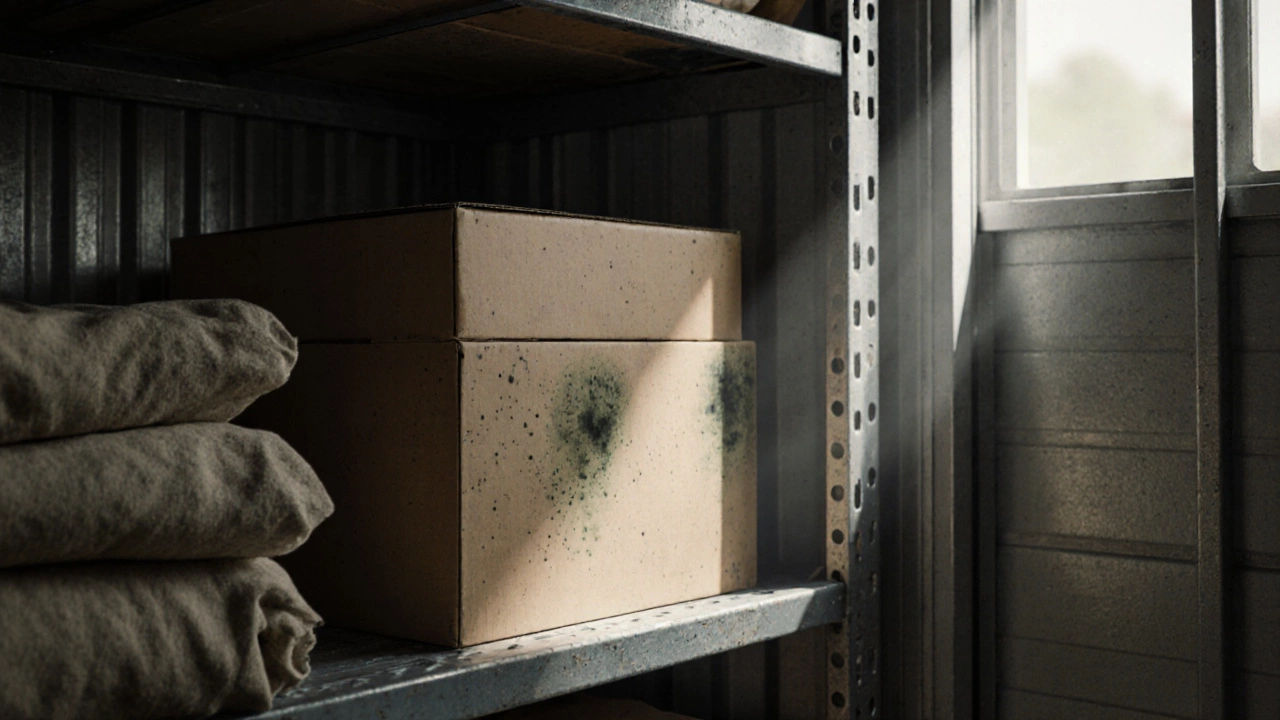Mold Remediation Storage: Protect Your Belongings After a Flood
When dealing with Mold Remediation Storage, the process of safely keeping items after mold cleanup. Also known as post‑mold storage, it helps stop mold from spreading back onto your furniture, clothes, and boxes. mold remediation storage isn’t just tucking things into a garage; it’s a planned approach that keeps moisture out and protects what you value.
One of the biggest related ideas is Furniture Storage, temporary holding of home items in a safe space. Whether you use a self‑storage unit, a friend’s spare room, or a dedicated closet, the goal is the same: keep your pieces from getting damp again. Climate Controlled Storage, a facility that maintains steady temperature and humidity plays a crucial role because mold thrives in fluctuating conditions. By keeping humidity below 60% and temperature stable, you cut the mold life cycle short.
Here’s how the concepts connect: Mold remediation storage encompasses moisture control. If you can keep the air dry, spores won’t find a foothold. Effective mold removal requires proper storage because even a clean surface can get re‑infested if it sits in a humid box. Climate controlled storage protects furniture from re‑growth, acting like a barrier between your items and the outdoor weather. These three semantic triples illustrate why you can’t treat storage as an afterthought.
Preparing Items Before They Go In
Before you lock the door, clean everything thoroughly. Use a EPA‑approved mold remover on surfaces, then let each piece dry completely—this can take 24‑48 hours depending on material. For upholstery, a gentle vacuum followed by a fabric‑safe disinfectant works well. Next, wrap items in breathable materials such as cotton sheets or specialized storage bags; avoid plastic sheeting that traps moisture. Adding silica gel packets or desiccant packs to each box adds an extra layer of moisture control, especially in areas prone to high humidity.
Packaging isn’t the only step. Label each box with the date it was packed and a quick note on any remaining moisture‑sensitive items. This helps you monitor how long things have been stored and signals when it’s time to inspect. Regular checks—once a month, for instance—let you catch condensation early and move items to a drier spot if needed.
Choosing the right storage unit matters, too. If you’re using a commercial facility, ask about their ventilation system and whether they monitor humidity levels. Some sites publish real‑time humidity data, which can be a lifesaver. Units without climate control can still work if you add a dehumidifier, but you’ll need to power it and check its performance regularly.
Another related entity is Moisture Control, techniques and tools to keep humidity low. Dehumidifiers, moisture‑absorbing packets, and even proper airflow—like leaving a small gap in the unit’s door—are all part of this toolkit. When moisture control and mold remediation storage intersect, you create a hostile environment for spores, which dramatically lowers the chance of a re‑infestation.
Even after you’ve set everything up, keep an eye on the storage environment. Look for signs like a musty smell, water stains on walls, or condensation on windows. If any of these appear, move the affected items to a drier location and address the source of moisture immediately—whether it’s a leak, poor ventilation, or a broken HVAC component.
Financially, proper mold remediation storage can save you money. Re‑treating mold or replacing ruined furniture is far costlier than investing in a good storage solution up front. Many insurance policies cover storage costs if they’re part of an approved remediation plan, so keep receipts and document the steps you’ve taken.
To sum up, successful mold remediation storage blends three key actions: thorough cleaning, smart packaging, and a controlled storage environment. By treating each step as part of a larger system—cleaning feeds storage, storage relies on moisture control, and moisture control safeguards cleaning—you create a cycle that keeps mold at bay. Below, you’ll find a curated set of articles that dive deeper into specific topics like climate‑controlled units, packing tips, and cost‑effective solutions. Browse through them for more hands‑on advice that fits your situation.
Can Mold Grow in Storage Units? Risks and Prevention Tips
Learn if mold can grow in storage units, how to spot it early, and practical steps to prevent and remediate mold in your stored items.







